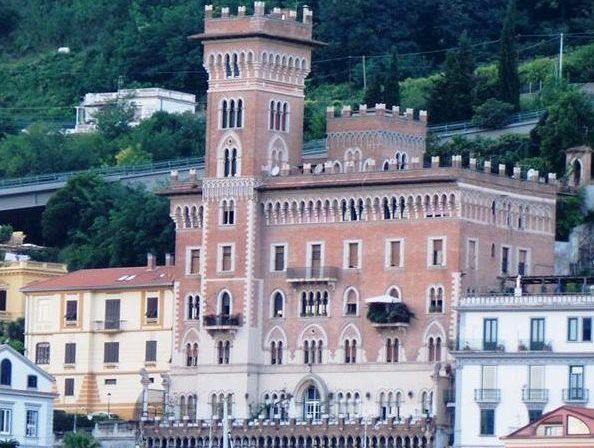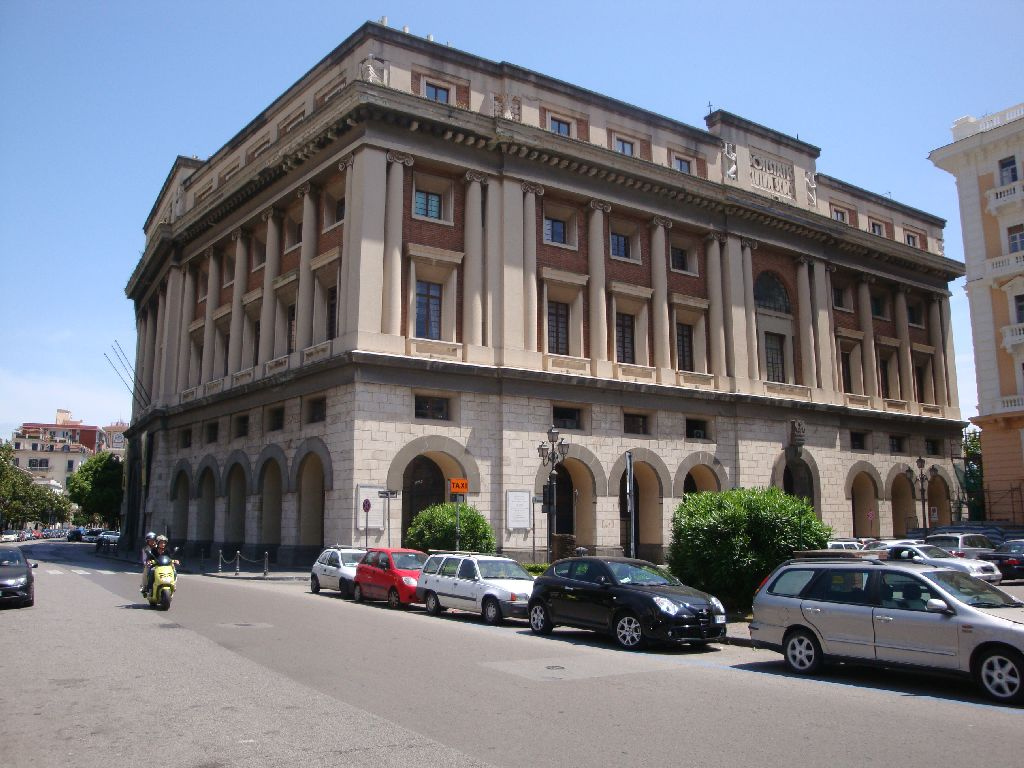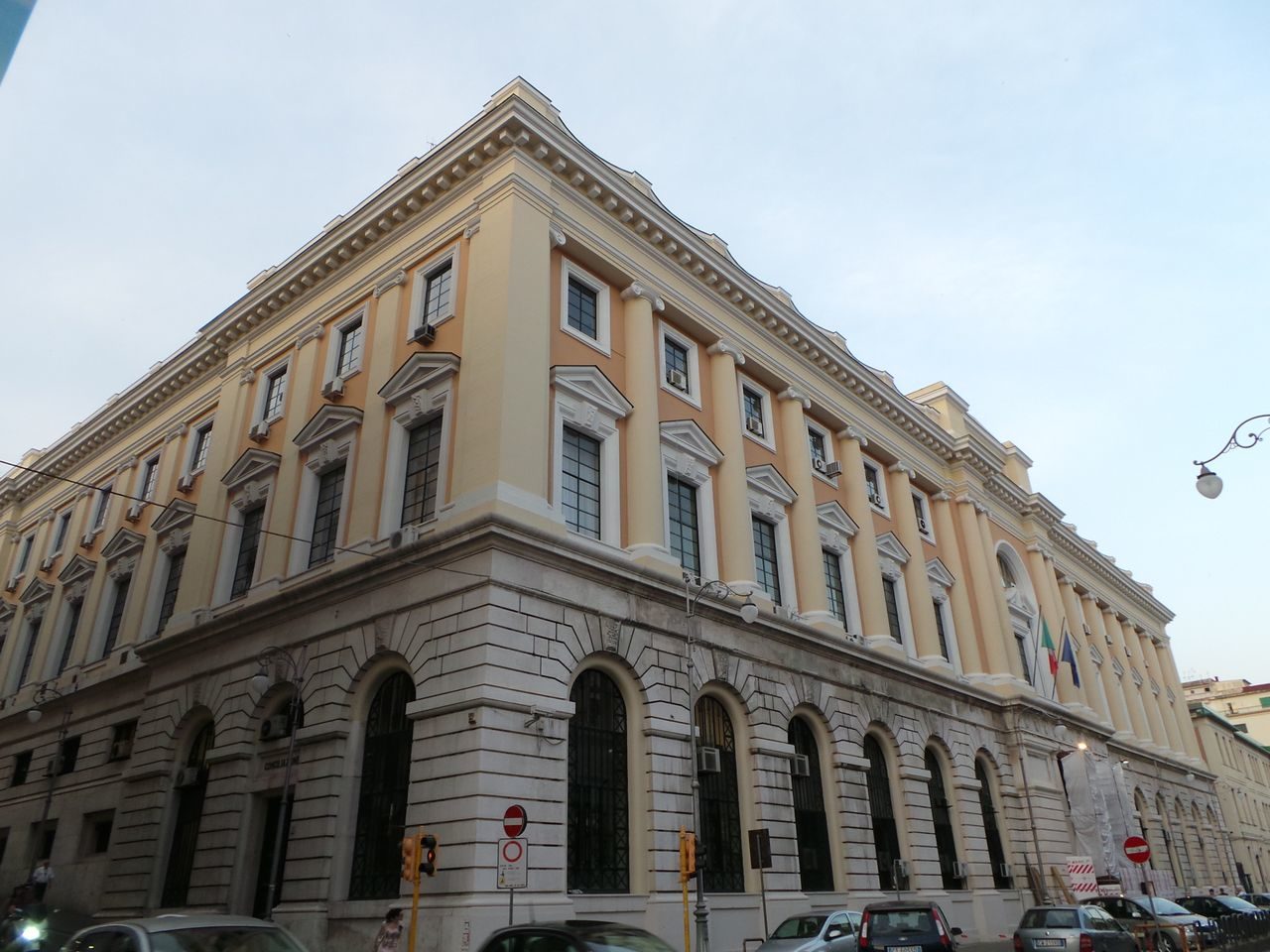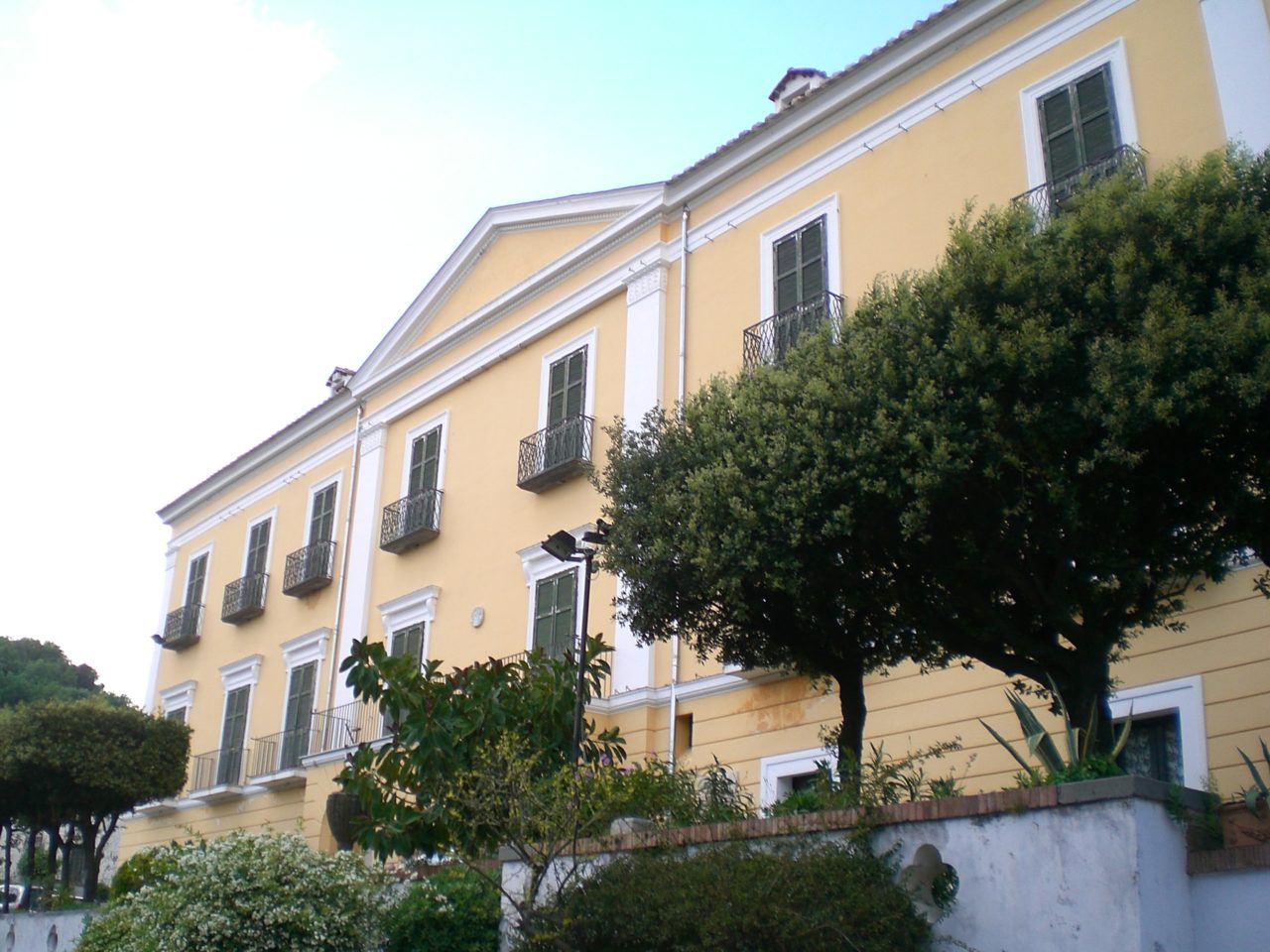Salerno e tutto il suo territorio erano stati, nel settembre dell’anno precedente, il teatro di guerra della più grande operazione aeronavale in Europa, mai dimenticata dall’esercito degli Stati Uniti che ancora nel 2003 ha reso onore a quei giorni chiamando Salerno una delle sue principali basi in Afghanistan durante l’operazione Enduring Freedom, base significativamente conosciuta poi come “Rocket City”.
Quello sbarco, all’alba seguente dell’annuncio dell’armistizio liberò d’un colpo il sud d’Italia per cui agli inizi del 1944 il governo Badoglio e il Re si trasferirono a Salerno, che divenne sede del governo fino al luglio dello stesso anno quando, avvenuta la liberazione di Roma, il Governo tornò nella propria sede naturale.
Scene dello sbarco del 9 settembre 1943
I ministri del governo Bonomi, Benedetto Croce e Carlo Sforza
Proprio a Salerno Togliatti maturò una scelta [sturzo.it] che influenzò enormemente gli eventi che seguirono. In accordo con l’Unione Sovietica decise di posticipare la questione della monarchia alla conclusione della guerra, considerando prioritaria la vittoria contro i tedeschi. Fu una decisione estremamente impopolare nel suo partito ma riuscì a compattare il fronte che si opponeva ai nazi-fascisti, fronte di cui facevano parte anche aree di ispirazione monarchica.
Il re cedette allora alle pressioni degli alleati e il 5 giugno nominò luogotenente del Regno il figlio Umberto, il cambio determinò le dimissioni del governo Badoglio ma la ritrovata unità del fronte antifascista, impedì una nuova nomina a Badoglio al quale fu preferito Ivanoe Bonomi. Il governo Bonomi era formato da personalità di grande rilievo quali De Gasperi, Benedetto Croce, Togliatti Saragat e con quell’insediamento il 22 giugno prese l’avvio il percorso che avrebbe portato all’Assemblea Costituente e al Referendum tra Monarchia e Repubblica.
Il decreto legislativo luogotenenziale del 25 giugno 1944, n. 151. sanciva che era concessa “al popolo italiano” la facoltà di eleggere ” una Assemblea Costituente per deliberare la nuova costituzione dello Stato”, al fine di sceglierne “le forme istituzionali”.
l’8 luglio ci fu l’ultimo atto a Salerno di quel governo con la formalizzazione sulla Gazzetta Ufficiale di un testo di legge che indicava tale iter da realizzarsi alla fine della guerra.
il 15 luglio il governo Bonomi si riunisce per la prima vola nuovamente a Roma.
I ministri del governo Bonomi
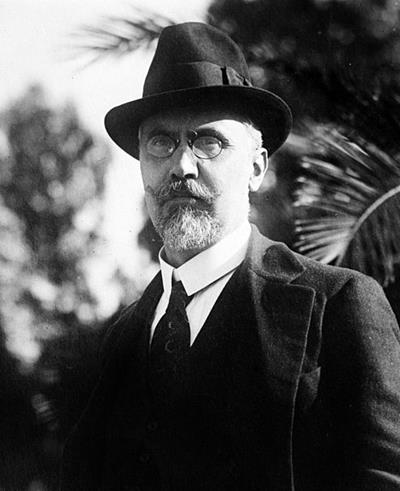
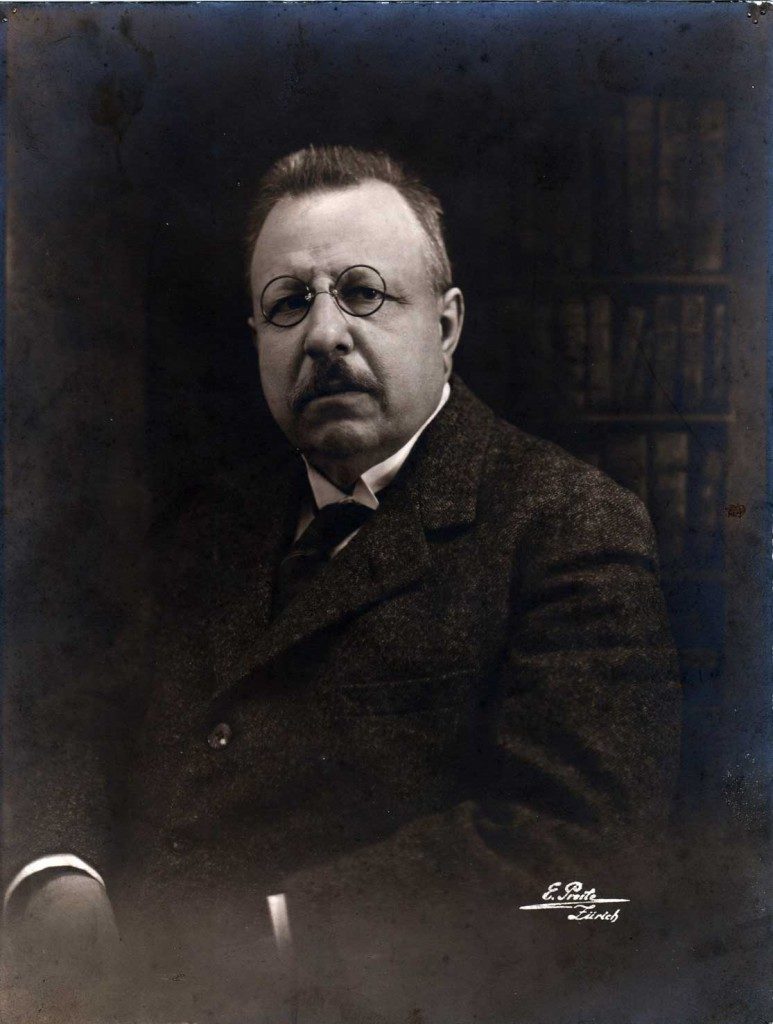
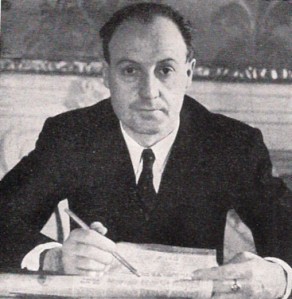
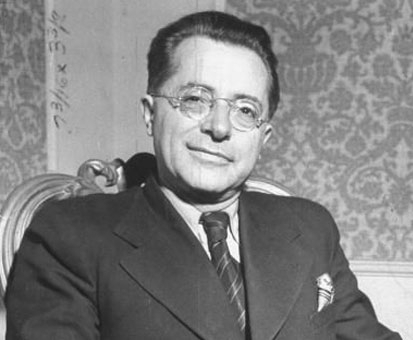
75 years ago, Salerno Capital. 22nd June – 14th July 1944, the first Council of Ministers, expression of the unitary anti-fascist front
Salerno and all its territory had been, in September of the previous year, the theatre of war of the largest air-naval operation in Europe, never forgotten by the United States army which still in 2003 honoured those days by calling “Salerno” one of its main bases in Afghanistan during Operation Enduring Freedom, a base significantly later known as “Rocket City”.
That landing, following the announcement of the armistice, suddenly freed the south of Italy, therefore, at the beginning of 1944, the Badoglio government and the King moved to Salerno, which became the seat of government until July when, after the liberation of Rome, the Government returned to its natural seat.
It was in Salerno that Togliatti made a choice [sturzo.it] which greatly influenced the events that followed. In agreement with the Soviet Union, he decided to postpone the question of the monarchy to the end of the war, considering the victory against the Germans as a priority. It was an extremely unpopular decision in his party, but he managed to compact the front that opposed the Nazi-fascists, a front which also included areas of monarchical inspiration.
The king then yielded to pressure from the allies and on 5th June he appointed his son Umberto lieutenant of the Kingdom. The change brought about the resignation of the Badoglio government, but the newfound unity of the anti-fascist front prevented a new appointment in Badoglio to which Ivanoe Bonomi was preferred. The Bonomi government was made up of important personalities such as De Gasperi, Benedetto Croce, Togliatti Saragat and with that settlement on 22nd June the path that would lead to the Constituent Assembly and the Referendum between the Monarchy and the Republic began.
The lieutenant legislative decree of 25th June 1944, n. 151. sanctioned that “the Italian population” were granted the right to elect “a Constituent Assembly to deliberate the new constitution of the State”, in order to choose “the institutional forms”.
On 8th July there was the last act in Salerno of that government with the formalization in the Official Gazette of a text of law that indicated such a process to be carried out at the end of the war.
On 15th July the Bonomi government meets again for the first time in Rome.
Il y a 75 ans, Salerno Capital. 22 juin – 14 juillet 1944, premier Conseil des ministres, expression du front unitaire antifasciste.
Salerne et tout son territoire avaient été, en septembre de l’année précédente, le théâtre de guerre de la plus grande opération aéronavale d’Europe, jamais oubliée par l’armée des États-Unis qui, en 2003 encore, a honoré ces jours en qualifiant « Salerne » de ses principales bases en Afghanistan lors de l’opération Enduring Freedom, une base bien plus tard connue sous le nom de “Rocket City”.
Ce débarquement, à la suite de l’annonce de l’armistice, libéra soudainement le sud de l’Italie, donc, au début de 1944, le gouvernement Badoglio et le roi s’installèrent à Salerne, qui devient le siège du gouvernement jusqu’en juillet quand, après la libération de Rome , le gouvernement est revenu à son siège naturel.
C’est à Salerne que Togliatti fit un choix qui influença grandement les événements qui suivirent. En accord avec l’Union soviétique, il décide de reporter la question de la monarchie à la fin de la guerre, considérant la victoire contre les Allemands comme une priorité. C’était une décision extrêmement impopulaire dans son parti, mais il réussit à compacter le front qui s’opposait aux nazis-fascistes, un front qui comprenait également des zones d’inspiration monarchique.
Le roi cède alors aux pressions des alliés et nomme le 5 juin son fils Umberto lieutenant du Royaume. Le changement a entraîné la démission du gouvernement Badoglio, mais l’unité retrouvée du front antifasciste a empêché une nouvelle nomination à Badoglio à laquelle Ivanoe Bonomi a été préféré. Le gouvernement Bonomi était composé de personnalités importantes telles que De Gasperi, Benedetto Croce, Togliatti Saragat et avec ce règlement le 22 juin, le chemin qui mènerait à l’Assemblée constituante et au référendum entre la monarchie et la République a commencé.
Le lieutenant décret législatif du 25 juin 1944, n. 151. a sanctionné que “la population italienne” ait obtenu le droit d’élire “une Assemblée constituante pour délibérer de la nouvelle constitution de l’Etat”, afin de choisir “les formes institutionnelles”.
Le 8 juillet eut lieu le dernier acte à Salerne de ce gouvernement avec la formalisation au Journal Officiel d’un texte de loi qui indiquait un tel processus à mener à la fin de la guerre.
Le 15 juillet, le gouvernement Bonomi se réunit pour la première fois à Rome.
Hace 75 años Salerno Capitale. 22 de junio – 14 de julio de 1944, el primer Consejo de Ministros expresión del frente unitario antifascista.
Salerno y todo su territorio habían sido, en septiembre del año anterior, el teatro de guerra de la mayor operación aeronaval en Europa, nunca olvidado por el ejército de Estados Unidos, que en 2003 honró aquellos días nombrando Salerno como una de sus principales bases en Afganistán durante la operación Enduring Freedom, base significativamente conocida como “Rocket City”.
Aquel desembarco, al alba siguiente del anuncio del armisticio liberó de un golpe al sur de Italia, por lo que a principios de 1944 el gobierno Badoglio y el Rey se trasladaron a Salerno, que se convirtió en sede del gobierno hasta julio del mismo año cuando, después de la liberación de Roma, El gobierno volvió a su sede.
En Salerno Togliatti maduró una elección [sturzo.it] que influyó enormemente los acontecimientos que siguieron. De acuerdo con la Unión Soviética, decidió posponer la cuestión de la monarquía hasta el final de la guerra, dando prioridad a la victoria contra los alemanes. Fue una decisión extremadamente impopular en su partido, pero logró unir el frente que se oponía a los nazis.
El rey cedió entonces a la presión de los aliados y el 5 de junio nombró lugarteniente del Reino su hijo Umberto, el cambio determinó la dimisión del gobierno Badoglio pero la nueva unidad del frente antifascista impidió un nuevo nombramiento en Badoglio al que fue preferido Ivanoe Bonomi. El gobierno de Bonomi estaba formado por personalidades importantes como De Gasperi, Benedetto Croce, Togliatti Saragat, y con ese asentamiento, el 22 de junio tomó el camino que llevaría a la Asamblea Constituyente y al Referéndum entre Monarquía y República.
El decreto legislativo lugarteniencial del 25 de junio de 1944, n. 151. El Tribunal de Primera Instancia declaró que se concedía al “pueblo italiano” la facultad de elegir “una Asamblea Constituyente para deliberar la nueva constitución del Estado”, con el fin de elegir “las formas institucionales”.
El 8 de julio se produjo el último acto en Salerno de ese gobierno con la formalización en el Diario Oficial de un texto de ley que indicaba este procedimiento para realizarse al final de la guerra.
El 15 de julio el gobierno Bonomi se reúne para la primera vez a Roma.
